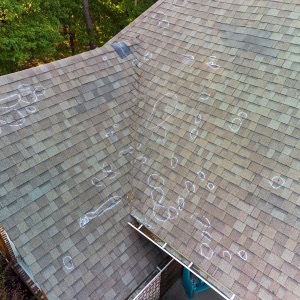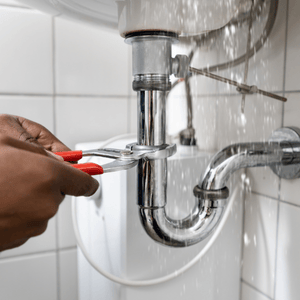Water damage is one of the most common and costly problems homeowners face, leading to billions of dollars in repairs annually. A single leak or unnoticed crack can spiral into major structural damage, mold growth, and expensive restoration costs. Worse yet, water damage can go undetected for weeks or even months, compromising your home’s integrity before you even realize there’s a problem.
The good news? Most water damage is preventable with the right proactive maintenance. Taking a few simple steps now to prevent water damage can save you thousands of dollars in home water restoration costs and protect your home from unexpected flooding.
In this guide, we’ll walk through essential maintenance tips to keep your home dry, safe, and free from the stress of water damage restoration in Austin.
1. Inspect, Detect, Protect: The Golden Rule of Water Damage Prevention
Water damage rarely happens overnight. Most problems start small—tiny leaks, hidden moisture, or clogged drains—and snowball into major repair jobs if left unchecked. That’s why regular inspections are your first line of defense.
What to Check Regularly:
- Roof & Gutters: Look for missing shingles, sagging gutters, and signs of leaks.
- Plumbing System: Inspect under sinks, around water heaters, and near appliances for drips or corrosion.
- Foundation & Basement: Watch for cracks, damp spots, or pooling water.
- HVAC System: Ensure condensate drains are clear and functioning properly.
Create a seasonal maintenance checklist to catch small problems early—before they lead to costly water damage restoration in Austin.
2. Roof Rescue: Don’t Let Leaks Rain on Your Parade
Your roof shields your home from the elements, but even minor issues can lead to hidden leaks and major water damage. Regular inspections and prompt repairs can prevent costly damage and keep your home dry.
How to Keep Your Roof in Top Shape:

- Inspect shingles for cracks, curling, or missing pieces, especially after storms.
- Clear gutters and downspouts to prevent water buildup and overflow.
- Check attic spaces for signs of leaks, mold, or wet insulation.
- Hire a professional roofing contractor for annual inspections.
If roof leaks go unnoticed, they can lead to widespread damage requiring extensive flood damage restoration in Austin. Stay ahead of the problem with regular maintenance.
3. Gutter Smarts: Keep the Flow Moving
Your gutters and downspouts are essential for directing water away from your home. When clogged, water overflows and seeps into your foundation, basement, or siding, causing moisture-related damage.
Gutter Maintenance Tips:
- Clean gutters seasonally to remove leaves, dirt, and debris.
- Check for loose or sagging gutters and tighten fasteners.
- Ensure downspouts extend at least 3-5 feet away from your home’s foundation.
- Install gutter guards to reduce debris buildup and improve drainage.
Neglecting your gutters could lead to serious foundation issues, making flood damage restoration in Austin necessary.
4. Seal It Up: Waterproofing 101 to Prevent Water Damage
Cracks in foundation walls, crawl spaces, and basement floors are major entry points for water. Waterproofing your home reduces the risk of flooding and long-term structural damage.
Waterproofing Solutions:
- Apply waterproof coatings to basement walls and floors.
- Seal foundation cracks with high-quality caulk or epoxy.
- Install a sump pump for basements prone to water intrusion.
- Use vapor barriers in crawl spaces to prevent moisture buildup.
If water is already seeping into your basement, professional water damage restoration in Austin can help prevent mold growth and structural deterioration.
5. Plumbing Perfection: Fix the Leaks Before They Flood Your Wallet

Small leaks might seem harmless, but they waste thousands of gallons of water annually and can cause serious damage over time. Undetected pipe leaks can weaken walls and floors, leading to expensive home water restoration.
How to Prevent Plumbing Disasters:
- Check under sinks and around pipes for drips or corrosion.
- Inspect water heater connections for leaks.
- Look for soft spots or discoloration on walls and ceilings.
- Install a water leak detection system for early warnings.
If you’re dealing with a plumbing-related water emergency, Austin TX water extraction experts at Austin Hi-Tech Restoration can remove excess water and prevent further damage.
6. Damp Basement Dilemma: Keep Your Foundations Dry
Basements are prone to moisture buildup, and if left unchecked, damp conditions can weaken your foundation and lead to mold growth.
Prevent Basement Water Damage:
- Ensure proper drainage by grading the yard away from your home.
- Use a dehumidifier to keep humidity levels low.
- Check basement walls and floors for dampness or stains.
- Seal window wells to prevent water seepage.
If water damage has already occurred, professional water damage restoration in Austin can help restore your basement and prevent future flooding.
7. HVAC Check-Up: Avoid Condensation Catastrophes
Your HVAC system removes excess moisture from the air, but neglected maintenance can lead to leaks and mold growth.
HVAC Maintenance Tips:
- Clean condensate drain lines to prevent clogs.
- Inspect drip pans for standing water.
- Replace air filters regularly to improve efficiency and reduce moisture buildup.
- Schedule annual professional inspections.
Ignoring HVAC leaks can lead to water damage in unexpected areas—requiring Austin water extraction services to remove trapped moisture.
8. Landscaping Know-How: Create a Water-Safe Yard
How water drains around your home affects its risk of flooding. Poor yard grading or improper landscaping can push water toward your foundation, increasing the chance of seepage.
How to Keep Water Away from Your Home:
- Grade your yard to slope away from your foundation.
- Use French drains to redirect excess water.
- Plant water-absorbent vegetation to help soak up rainwater.
- Keep landscaping features at least 12 inches from your home’s foundation.
Taking these steps can help prevent flood damage restoration in Austin due to poor drainage.
9. Plan for the Unexpected: Emergency Preparedness to Minimize Water Damage
Even with the best maintenance, water damage can still happen. Having an emergency plan can help you act quickly and minimize losses.
Be Prepared for Water Emergencies:
- Know where your main water shut-off valve is located.
- Keep a wet/dry vacuum, sump pump, and dehumidifier on hand.
- Store important documents in waterproof containers.
- Review your insurance policy to understand what’s covered.
If water damage strikes, Austin Hi-Tech Restoration offers 24/7 emergency Austin TX water extraction and flood restoration services.
Skip the Drip—Prevent Water Damage Today!
Water damage is costly, but preventable with regular maintenance and early action. By inspecting your home, fixing leaks, waterproofing vulnerable areas, and keeping drainage systems clear, you can avoid expensive restoration costs and long-term damage.
If you ever need water damage restoration in Austin, trust Austin Hi-Tech Restoration to provide fast, expert service to get your home back to normal.
Need Help? Contact Us Today!
We offer home water restoration, Austin TX water extraction, and flood damage restoration to keep your property safe, dry, and damage-free.

